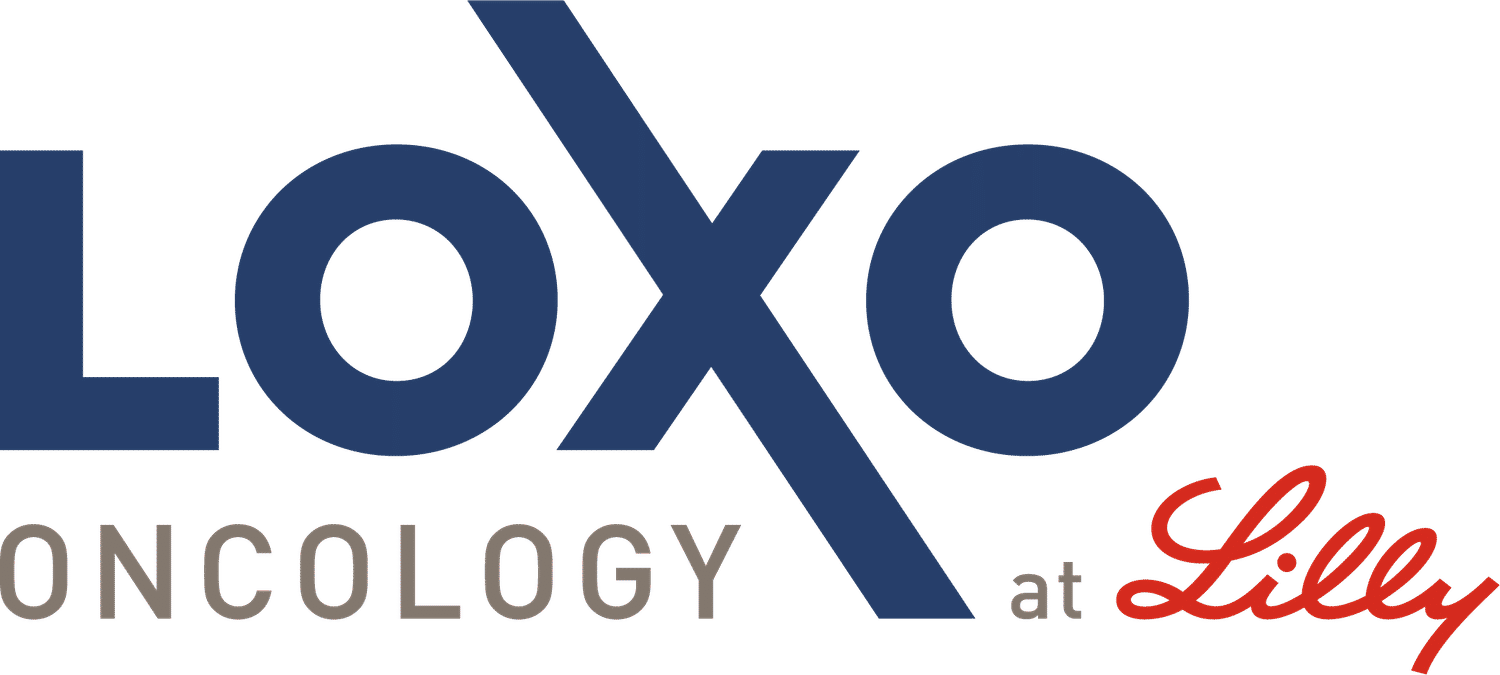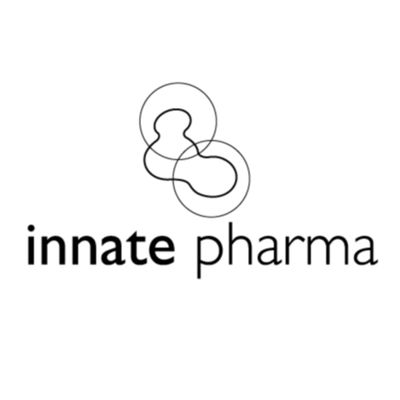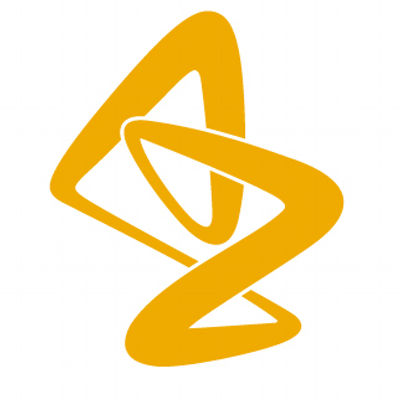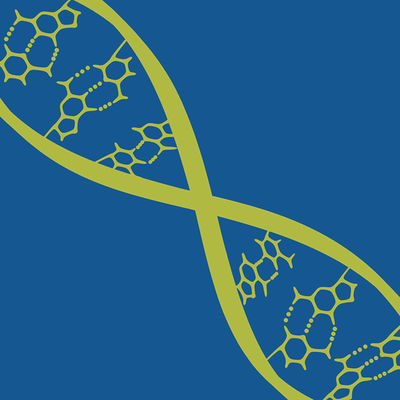预约演示
更新于:2025-05-07
Chronic leukemia
慢性白血病
更新于:2025-05-07
基本信息
别名 CHRONIC LEUKEMIA、Chronic Leukemia、Chronic leukaemia + [30] |
简介 A slowly progressing leukemia characterized by a clonal (malignant) proliferation of maturing and mature myeloid cells or mature lymphocytes. When the clonal cellular population is composed of myeloid cells, the process is called chronic myelogenous leukemia. When the clonal cellular population is composed of lymphocytes, it is classified as chronic lymphocytic leukemia, hairy cell leukemia, or T-cell large granular lymphocyte leukemia. |
关联
14
项与 慢性白血病 相关的药物作用机制 BTK C481S抑制剂 |
原研机构 |
最高研发阶段批准上市 |
首次获批国家/地区 美国 |
首次获批日期2023-01-27 |
靶点 |
作用机制 CD22抑制剂 |
在研机构 |
原研机构 |
在研适应症 |
最高研发阶段批准上市 |
首次获批国家/地区 美国 |
首次获批日期2018-09-13 |
靶点 |
作用机制 PDL1抑制剂 |
原研机构 |
最高研发阶段批准上市 |
首次获批国家/地区 美国 |
首次获批日期2016-05-18 |
127
项与 慢性白血病 相关的临床试验ACTRN12625000236493
Chronic Myeloid Leukaemia: Treatment-Free Remission Registry
开始日期2025-04-14 |
ACTRN12625000160437
Evaluate the feasibility and benefits of the Molecular Screening and Therapeutics in Leukaemia and Lymphoma Study, in participants with haematological malignancies
开始日期2025-03-07 |
申办/合作机构- |
ACTRN12625000056493
Microbiome and Fibre Supplementation in Chimeric Antigen Receptor T cell Therapy patients - phase I clinical trial of safety and feasibility of oral fibre supplementation in CAR T
开始日期2025-02-10 |
100 项与 慢性白血病 相关的临床结果
登录后查看更多信息
100 项与 慢性白血病 相关的转化医学
登录后查看更多信息
0 项与 慢性白血病 相关的专利(医药)
登录后查看更多信息
1,039
项与 慢性白血病 相关的文献(医药)2025-05-01·Biomedical Chromatography
Quality by Design Based Chromatography Technique Development and Validation for the Medicine Venetoclax (for Chronic Leukemia), in the Context of Impurities Including Degradation Products
Article
作者: Bandaru, Lova Gani Raju ; Dandabattina, Rajeshwari ; Gundla, Rambabu ; Sharathbabu, Haridasyam ; Merugu, Karuna Sree ; Katari, Naresh Kumar
2025-04-08·JCI Insight
Immunometabolite L-2-HG promotes epigenetic modification of exhausted T cells and improves antitumor immunity
Article
作者: Wu, Duojiao ; Yang, Ying ; Ma, Mingyue ; Yang, Yanying ; Liu, Fangming ; Ruan, Chengchao ; Cheng, Zhouli ; Li, Xiaoyan ; Wang, Hua ; Shi, Yinghong ; Zhang, Zheng ; Li, Xiaoyang ; Wang, Xiangdong ; Lu, Yan
2025-03-17·Journal of the Advanced Practitioner in Oncology
Survivorship and Advance Care Planning in Cancer
作者: Faiman, PhD, MSN, APRN-BC, AOCN®, BMTCN, FAAN, FAPO, Beth
41
项与 慢性白血病 相关的新闻(医药)2025-04-22
点击蓝字关注我们编者按:2025年4月18日-19日,由中国临床肿瘤学会(CSCO)和北京市希思科临床肿瘤学研究基金会联合主办的2025 CSCO指南会在济南山东大厦隆重召开。会议期间,2025版CSCO 恶性血液病指南正式发布。《肿瘤瞭望-血液时讯》现场特邀指南编写者之一、哈尔滨血液病肿瘤研究所贡铁军教授,围绕指南更新理念及治疗策略等热点问题进行深入解读与分享。《肿瘤瞭望-血液时讯》:今年CSCO恶性血液病指南在白血病部分进行了哪些重点修订?这些更新体现了目前治疗理念或分型策略的哪些新进展?贡铁军教授截至今年,CSCO恶性血液病指南已第六次更新。自2020年起,我们启动了该指南的编撰工作,每年都会将恶性血液病在诊断和治疗方面的新进展,包括靶向治疗与免疫治疗的研究成果,以及整体的规范治疗纳入其中。因此,CSCO指南融合了规范诊疗与学术前沿内容,既确保了临床医生的可操作性,推动了诊疗的规范化,同时也促使将最新的治疗成果应用于临床。这也是CSCO指南区别于其他指南的显著特点。在指南的编写过程中,我们优先纳入循证医学级别高的内容。同时,考虑到部分循证级别较低的内容,如国产药物、传统习惯用法等,我们将其列为Ⅱ、Ⅲ级推荐或进行相应注释,以提醒医生在临床实践中进行规范应用。《肿瘤瞭望-血液时讯》:在急性髓系白血病(AML)的诊疗方面,CSCO指南对靶向治疗、诱导方案选择及异基因造血干细胞移植的适应证是否作出了新的推荐?这对临床决策会带来哪些影响?贡铁军教授尽管AML在血液肿瘤领域进展相对较缓,但我们对这一领域的进展并未忽视。目前虽已获批多种靶向治疗药物,如FLT3 抑制剂、IDH1抑制剂、维奈克拉等,但临床需求仍未完全满足。因此,我们对AML患者(无论年龄、是否难治复发)的诊疗流程进行了全面规范,涵盖治疗前评估与分层,以及治疗方案的选择等。我们根据不同患者情况制定了个体化方案,对于能够耐受强化化疗的患者,提供相应的化疗选择,并结合免疫治疗与靶向治疗的联合方案;对于不能耐受强化化疗的患者,则可选择低剂量化疗联合靶向治疗和免疫治疗。此外,我们还考虑到药物可及性问题,对于国内尚未广泛可及、但可在广州博鳌等地获取的药物,将其列入指南注释,为医生提供备选方案。这既能方便医生根据患者实际情况灵活选择药物,又能为医生在使用这些药物时提供必要的支持与保障。《肿瘤瞭望-血液时讯》:指南在慢性白血病(如CML和CLL)的管理上也有更新。在TKI治疗的序贯策略、停药探索,以及新型靶向药物(如BTK抑制剂、BCL-2抑制剂)的使用方面,CSCO指南有哪些新的推荐?贡铁军教授在慢性白血病领域,无论是慢性淋巴细胞白血病(CLL)还是慢性髓性白血病(CML),我们每年都会进行更新。今年,我们对CML部分的治疗方案未做调整,但对于CLL部分,我们进行了一些重要更新。此次更新主要基于以下两点考虑:一是CLL作为一种长期慢性疾病,需要关注患者的长期规范管理;二是随着非共价BTK抑制剂的正式上市以及新一代BCL-2抑制剂的即将上市,这些新型药物为我们带来了更多治疗选择。基于这些变化,我们对指南进行了相应调整。对于初诊患者及难治复发患者,我们在治疗中加入了BTK抑制剂与BCL-2抑制剂的联合治疗方案,同时还结合了CD20单抗治疗。这些治疗方案根据循证医学的支持,分别被列为一类、二类或三类推荐。此次更新不仅使指南内容与时俱进,紧跟学术前沿,还为基层医生提供了更丰富的治疗选择,帮助他们在众多方案中为患者制定最佳的治疗策略。《肿瘤瞭望-血液时讯》》:白血病的治疗越来越走向个体化,MRD监测在指南中被反复强调。CSCO对白血病中MRD的检测方法、判定标准及临床意义有怎样的新指引?这一指标在治疗决策中将发挥多大作用?贡铁军教授微小残留病(MRD)监测最初是从急性白血病领域开始应用的,如今我们已将其动态监测推广至包括急性白血病在内的多种血液肿瘤。借助CSCO指南以及其他权威规范的引导,我们致力于为临床医生提供明确的MRD监测框架,包括何时启动监测、设定合理的监测阈值、确定监测频率以及依据监测结果判断何时需调整治疗方案。这些细致的规定在CSCO指南中均有清晰的定位,以便医生能够迅速找到所需信息。这本指南犹如医生手中的“口袋书”,成为临床决策的关键依据,极大地提升了诊疗的便利性和规范性。专家简介贡铁军 教授哈尔滨血液病肿瘤研究所副所长中华医学会血液学分会常务委员中国医师协会血液科医师分会委员中国临床肿瘤学会(CSCO)骨髓瘤专家委员会副主任委员、白血病专家委员会副主任委员、淋巴瘤专家委员会委员中国抗癌协会血液肿瘤专委会常委、血液病转化专委会常委中国医院协会血液学机构分会常委国家卫健委能力建设和继续教育肿瘤学专家委员会委员《中华血液学杂志》通讯编委、《白血病 淋巴瘤》编委黑龙江省医学会血液学分会副主任委员黑龙江省抗癌协会血液肿瘤专委会侯任主任委员黑龙江省医师协会淋巴瘤骨髓瘤专委会副主任委员(来源:《肿瘤瞭望–血液时讯》编辑部)声 明凡署名原创的文章版权属《肿瘤瞭望》所有,欢迎分享、转载。本文仅供医疗卫生专业人士了解最新医药资讯参考使用,不代表本平台观点。该等信息不能以任何方式取代专业的医疗指导,也不应被视为诊疗建议,如果该信息被用于资讯以外的目的,本站及作者不承担相关责任。
CSCO会议免疫疗法
2025-04-14
Genetically engineered chimeric antigen receptor immune cell with implanted mrna gene strand - 3d illustration
Christoph Burgstedt/Getty Images
At the GenScript Biotech Global Forum 2025, industry leaders celebrated CAR T cell therapy achievements while discussing ongoing challenges in manufacturing, distribution, treatment center capacity, and global payment structures for cell and gene therapies.
FDA approval for chimeric antigen receptor (CAR) T cell therapy occurred 30 years after the initial research began. Prior to the approval, the first successful treatment using CAR T cells was in 2010 for a retired Marine with chronic leukemia. Two years later, Emily Whitehead became the first child treated and cured. Key industry leaders came together to celebrate these and other CAR T cell achievements as well as discuss the therapy’s future at the
2025 GenScript Biotech Global Forum.
As one of the keynote speakers,
Carl June, MD
, professor and director of the Center for Cellular Immunotherapies at the University of Pennsylvania’s Perelman School of Medicine highlighted, “Since the first approval, approximately 50,000 patients have been treated with CAR T cells worldwide, primarily for blood cancers.”
June stated that 2024 was a breakthrough year for cell and gene therapies (CGTs). He emphasized that CAR T cell therapies have made remarkable breakthroughs in glioblastoma treatments and early-stage treatments for autoimmune diseases.
Alan Bash
, president of Legend Biotech, seconded this opinion in a panel discussion following June’s remarks.
Carl June, MD delivers one of the keynote speeches at the GenScript Biotech Global Forum 2025
“The products are delivering, and the products are demonstrating the innovation for patients,” Bash said.
CGT Therapy Hurdles
Discussions throughout the event focused on manufacturing, distribution and payer challenges. However, before diving into those insights,
Michael Vreeland
, US site head at ProBio, stressed an important element that is frequently left out, which is talent.
“One of the things that’s often overlooked is the training piece, right?” Vreeland said. “How do we ensure consistent and repeatable training and execution?”
As this article dives into the other challenges, it is worth remembering that talent and experience are two pieces that will influence how the CGT space overcomes current and future hurdles.
Manufacturing and Scalability
Bash explained that the innovation continues “despite market and technological challenges.” However, he emphasized that the challenges are significant, noting that while regulatory hurdles have fallen, manufacturing and distribution still remain significant obstacles for the space.
Rey Mali
, chief business officer at Accellix, agreed that improvement is greatly needed in this area to influence both cost and access of CGTs.
“Now, it’s about scale,” she said. “Now, it’s about distribution. That part really needs to improve.”
It is not a simple task, as
Jonathan Esensten
, senior advisor at Multiply Labs and director of the Advanced Biotherapy Center at Sheba Medical Center, pointed out.
Panelists discuss the current CGT investment landscape at the GenScript Biotech Forum 2025.
“Current manufacturing often relies on ‘classified clean rooms,’ where people with their hands are actually manufacturing these products,” he said.
While automation and standardization will improve some tasks,
Hari Pujar,
operating partner at Flagship Pioneering, pointed out that there are limitations due to patient variability.
“No matter how much you automate, how much you standardize, you end up in the ex vivo situation with one variable, which is the patient cell,” he said.
Treatment Center Limitations
Along these lines, Bash highlighted an increasingly limited factor, noting, “Challenges that we are experiencing are not the capacity constraints for internal manufacturing, but the capacity constraints of the treatment centers.”
Investors agreed that the ability to get outside of major academic centers and use CGTs in less intense, medically intensive settings is a major focus for investors as they evaluate potential investment opportunities.
Supply Chain
Supply chain issues remain constant in the space. One of the main issues in the sector is that for many of the critical materials, reagents and equipment, there is a single supplier. This is especially concerning given these materials can be delayed. Additionally, starting material quality inconsistency is a significant challenge.
Mali emphasized, “Your drug is only as good as what you start off with...The patient has been through many different therapies, so what they have left can vary drastically.”
Market Challenges
Panelists discuss the future of CGTs at the GenScript Biotech Global Forum 2025.
The current economic market is an understandable challenge for the CGT space as it is for the entire industry. However,
Massimiliano Paganelli
, chief executive officer and co-founder at Morphocell Technologies, stated that the environment for CGT is worse off due to the initial excitement over cell and gene therapies. He noted that acquisitions of preclinical cell therapy companies for valuations that touched the billion-dollar mark have compounded the market challenges for CGTs.
Deeper, high-value valuations have lended to a slowdown of investment for the last five years. However, Paganelli stressed that because of a better understanding of CGTs, things are getting better from an investment perspective.
Global Payer Challenges
Amongst the existing challenges for the CGT space, the payer challenge is another hurdle some panelists, as investors, are grappling with currently. The panel highlighted that while the payment structure in the U.S. market is challenging, it is even more challenging abroad, with a focus on moving beyond Europe, the Middle East and Africa to the Asia-Pacific region (APAC).
That being said,
Louis Breton
, chief executive officer and co-founder at Rampart Bioscience, specified, “Patient-reported outcomes are becoming more and more critical to the progression of the way that the payers think about CGTs.”
Working with governments is only one part of the puzzle, the second being that research and development costs have to be lower. Panelists noted that CGT developers such as Legend Biotech, which can stand alone from a commercial standpoint, are of keen interest for investors.
Even with all of the challenges facing CGTs, venture capital funding remains strong, focusing on fewer but larger deals. In 2024, there were 18 initial public offerings. This is a significant swing upward from the six in 2023.
As technology and science continue to blend and evolve, unsurprisingly, all panelists agreed that this evolution is going to make a big impact. Automation and the use of robotic systems were highlighted as being the most impactful. Panelists also highlighted in vivo approaches, which offer significant mitigation for the challenges the sector faces.
Pujar poised the question
,
“What if we could create the cell inside the body…in which case we kind of default all of the challenges that have been mentioned?”
As a Field, We Need to Continue to Innovate.
Guowei Fang, President, Research and Development at Legend Biotech
Global Innovation and Collaboration
From a global perspective, a conversation regarding innovation is not complete without mentioning APAC.
Caroline Stout
, partner at EcoR1 Capital, emphasized, “The pace of innovation coming out of China and Japan is formidable.”
Bin Li
, founder and chief investment officer at Lake Bleu Capital, agreed, as China is becoming a significant source of innovation.
“It’s not first in class, but it’s best in class [for them],” Li said.
Cross-border collaboration and deals are of significant value despite geopolitical tensions.
Josh Resnick
, senior managing director at RA Capital Management, expressed hope that politics will not interfere with innovation.
“We view the world as fundamentally an open source to solve really hard problems,” Resnick said.
This is especially concerning for the CGTs space, as China has been the main source for many biospecifics and T cell engagers.
Conclusions
The CGT space is still new. The panelists agreed that much work needs to be done to educate investors and regulators. They emphasized the importance of communicating the value of innovation, highlighting that the industry can make sure to transmit that story to the general population.
To watch the panel discussions, read summaries, and view more content, please go to the
GenScript Biotech Global Forum 2025.
This article was written in collaboration with GenScript Biotech.
The insights team analyzes and comments on industry trends and creates thought leadership content for
BioSpace
and clients. The head of insights, Lori Ellis, can be contacted via
lori.ellis@biospace.com
. Follow her on
LinkedIn
.
细胞疗法免疫疗法上市批准
2025-02-27
·兰卫医学
当血液病遇上"技术革命"
血液病精准诊断的"黄金搭档":
MICM平台如何改写诊疗规则?
"医生,我的检查报告单为什么需要等这么久?"一位淋巴瘤患者的疑问道出了传统血液病诊断的痛点。
如今,随着MICM整合诊断平台的启用,这种等待从数周缩短到数天。这个由形态学(M)、免疫学(I)、细胞遗传学(C)、分子生物学(M)构建的MICM综合诊断平台,正在掀起血液病诊疗的精准化革命。MICM通过整合不同层面的检测信息,从宏观到微观,从细胞层面到分子层面,对血液疾病进行全面、深入的剖析,为临床医生提供准确的诊断结果和个性化的治疗建议。
一
揭秘MICM技术矩阵
形态学:百闻不如一见的 “火眼金睛”
形态学就像是在微观世界里的 “侦察兵”。通过显微镜,我们能够直接观察细胞的形态和结构,判断细胞是否出现异常,比如病态造血现象,或者异常细胞的出现。经验丰富的医生就如同微观世界的 “侦探”,从细胞的形状、大小、细胞核与细胞质的比例等细微之处,寻找疾病的蛛丝马迹。它是血液病诊断的基础,能够帮助医生初步判断病情,为后续更深入的检测指明方向。
免疫学:细胞身份的 “解码器”
免疫学利用流式细胞技术和免疫组化方法,如同细胞身份的 “解码器”。白血病细胞具有独特的免疫表型通过检测CD分子标记,它不仅能够区分90%以上的白血病亚型,还能发现仅占0.01%的微小残留病灶,通过这种方法我们可以区分急性和慢性白血病的不同亚型。临床数据表明,免疫分型让诊断准确率从60%大幅提升至95%。这对于准确诊断疾病、制定针对性的治疗方案非常关键。
特异:cMPO
幼稚:CD34,CD117,CD38,HLA-DR
粒单:CD33,CD13,CD11b,CD64,CD14,CD11c,CD15,CD16,CD10
巨核细胞:CD41,CD61,CD42b
红细胞:CD71,GlyA
细胞遗传学:染色体里的 “命运图谱”
细胞遗传学包括传统的染色体核型分析和荧光原位杂交技术(FISH)。染色体的结构和数量异常与许多血液疾病密切相关,数据显示,大约 60% 的血液肿瘤存在特征性染色体异常。传统的染色体核型分析可以帮助我们了解染色体的整体形态和数目变化,FISH技术则能够更精准地检测特定基因的位置和拷贝数变化。这些信息对于治疗方案的选择起着决定性作用。
分子生物学:基因层面的 “放大镜”
从PCR到NGS,分子诊断技术不断突破检测极限。NGS的高通量检测系统能够一次性筛查上百种融合基因亚型,将传统方法30%的漏检率降低至5%以下。数字PCR技术对BCR-ABL的检测灵敏度更是可以达到0.001%,让微小残留病灶(MRD)无所遁形。通过对基因层面的检测,我们能够深入理解疾病的发病机制,为靶向治疗提供有力的指导,从而提高治疗效果,减少不必要的治疗副作用。
二
行业变革:从单兵作战到系统整合
MICM 平台的优势在于它的全面性和精准性。单一的检测方法往往存在局限性,而 MICM 平台整合了多种检测技术,能够从多个角度对血液疾病进行评估。通过形态学的初步观察,免疫学的细胞分群,细胞遗传学的染色体分析,以及分子生物学的基因分型,医生可以全面了解患者的病情,制定出最适合患者的个性化治疗方案。
在临床实践中,MICM 平台已经取得了显著的成果。它提高了血液疾病的诊断准确率,减少了误诊和漏诊的发生。同时,基于精准的诊断结果,医生能够选择更有效的治疗方法,提高治疗效果,降低患者的痛苦和医疗成本。
三
未来图景:当AI遇见单细胞测序
随着医学技术的不断进步,MICM 平台也在不断发展和完善。未来,我们期待看到更多先进的检测技术融入 MICM 平台,进一步提高其诊断的准确性和效率。例如:数字PCR平台的持续发展,将让融合基因检测灵敏度提升至0.001%的同时成本降低60%,报告周期压缩至12小时,大大提高临床的可用性。单细胞测序技术正在突破肿瘤异质性难题,能解析白血病干细胞的基因表达谱,为根治性治疗提供新靶点。
精准医学时代的"诊断交响曲"
从显微镜到基因测序仪,从经验判断到数据驱动,MICM平台正在谱写血液病诊疗的精准乐章。正如黄晓军院士所言:"当形态学家的慧眼、免疫学家的精密、遗传学家的远见与分子生物学家的洞察完美融合,我们终将攻克血液肿瘤这座堡垒。"
兰卫医学专注于血液病诊断领域,构建了基于 MICM 的四大诊断平台,搭建起一套完善的产品矩阵。这个矩阵以荧光定量 PCR、数字 PCR、流式细胞术、二代测序等先进技术平台为核心,贯穿血液病诊疗的全过程。从血液病的亚型分型、预后评估,用药指导,微小残留病(MRD)监测,全面覆盖每一个关键环节的临床检测需求。
本文综合医学进展与临床实践,具体诊疗请遵医嘱;
图源来自于网络
本文由 市场中心 提供
免疫疗法
分析
对领域进行一次全面的分析。
登录
或

生物医药百科问答
全新生物医药AI Agent 覆盖科研全链路,让突破性发现快人一步
立即开始免费试用!
智慧芽新药情报库是智慧芽专为生命科学人士构建的基于AI的创新药情报平台,助您全方位提升您的研发与决策效率。
立即开始数据试用!
智慧芽新药库数据也通过智慧芽数据服务平台,以API或者数据包形式对外开放,助您更加充分利用智慧芽新药情报信息。
生物序列数据库
生物药研发创新
免费使用
化学结构数据库
小分子化药研发创新
免费使用






